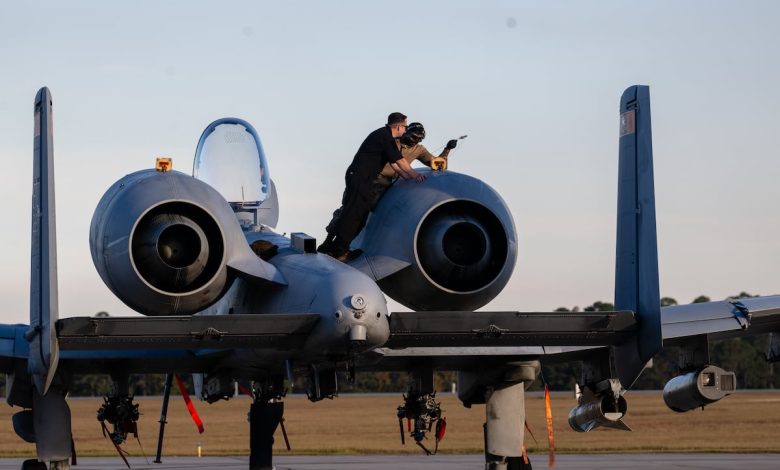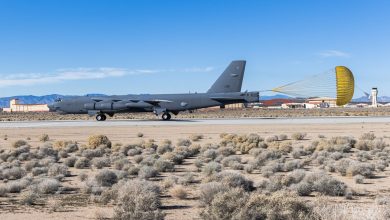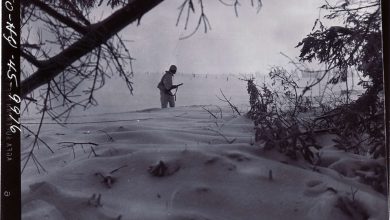Air Force practices operating from cut-off bases in fierce future war

In a future war against China or other advanced adversary, Air Force units may have to keep operating for days, weeks, or longer, while being cut off from reinforcements, resupply or even communications.
So this month, the 23rd Wing from Moody Air Force Base in Georgia practiced how its units can keep generating combat sorties and maintaining aircraft — on their own if they have to.
Exercise Mosaic Tiger 26-1, which took place Nov. 12 through 21 at locations across Florida and Georgia, aimed to show how the 23rd Wing will be able to carry out combat operations in a future high-end war against a significant adversary, the Air Force said in a series of releases.
The Air Force’s Agile Combat Employment strategy — which formed the backbone of this exercise, according to a Nov. 16 statement released by Moody — aims to ensure wings will be able to maintain and command combat airpower operations, even if they have to operate from dispersed and austere airfields that are cut off from central bases.
ACE was designed to prepare the Air Force for a potential war against China, which would likely target large, centralized air bases with cruise missiles or other weapons designed to prevent aircraft from taking off. The concept pushes Air Force units to be able to operate out of smaller, spread-out bases that are rougher than established sites. This also enables the Air Force to maintain operations in a contested battlespace even if they can’t get resupplied or reinforced right away.
The exercise included a variety of airmen and units, including attack, rescue and support elements, tested under environments intended to simulate the contested conditions in which future conflicts may unfold.
Airmen had to establish a forward operating site, rapidly rearm and refuel aircraft — a technique known as integrated combat turns — and maintain operations from those contingency locations to show they can be adaptable and operate from distributed sites.
One of the first and most important elements of the exercise was the activation of the wing’s 23rd Combat Air Base Squadron, according to the base. That squadron was in charge of establishing forward operating sites and setting up the new bases’ defense, logistics and communications capabilities.
As part of the multi-capable airman concept, airmen may have to do jobs outside of their core specialties, such as maintaining aircraft, establishing communications or guarding base perimeters, since an isolated base may not have all the resources or personnel a location typically would.
“Every airmen in the squadron is tackling tasks that normally wouldn’t fall in their wheelhouse,” squadron commander Lt. Col. Justin May said.
Maintenance airmen from the 74th and 75th Fighter Generation Squadrons at Moody were split up and sent to multiple different locations, each with unique situations and challenged to keep aircraft able to fly for a certain amount of time — without knowing when they might be resupplied.
“Whatever those airmen brought with them, they need to use judiciously until a future resupply,” the Air Force said on Nov. 19.
By forcing them to use equipment and supplies such as spare parts and oil sparingly, maintainers had to be innovative and adapt to the changing environments to keep planes such as A-10 Warthogs in the fight, said the Air Force. Sometimes, that involved finding ways to re-use parts to make them stretch further.
“Being responsible for what supplies we do have on site all leads back to ensuring that we stay accountable and utilize all resources available,” Staff Sgt. William Flores, a crew chief with the 75th, said in the Nov. 19 statement. “Take oil, for example. If we’re burning too much oil, we may want to swap jets so we’re not using more oil than we can supply, and by doing that, we can maintain air operations.”
Airmen also practiced how they would keep generating combat sorties, even if their communications with higher levels of command were limited or cut off altogether, Moody said in a Nov. 21 statement.
Airmen would have an air tasking order that spells out what they are supposed to do over the following three days, said Lt. Col. Nathan Frey, director of operations for the 74th. But if the communication outage lasted beyond those three days, the service said, a unit would shift to broader guidance on its mission and coordinate directly with nearby units.
That would involve operating in line with what units knew their commanders’ last known intent to be, the base said, as well as operating on prebriefed timelines.
“If [communication] degradation lasts past 72 hours, we would shift to military-type orders that provide broad intent and allow us to coordinate with adjacent units without the detailed integration from the” said Lt. Col. David Pool, commander of the 74th Mission Generation Force Element. “That’s where the wing would step in to assist in liaising between adjacent units to conduct detailed mission planning prior to execution.”
Stephen Losey is the air warfare reporter for Defense News. He previously covered leadership and personnel issues at Air Force Times, and the Pentagon, special operations and air warfare at Military.com. He has traveled to the Middle East to cover U.S. Air Force operations.
Read the full article here









